

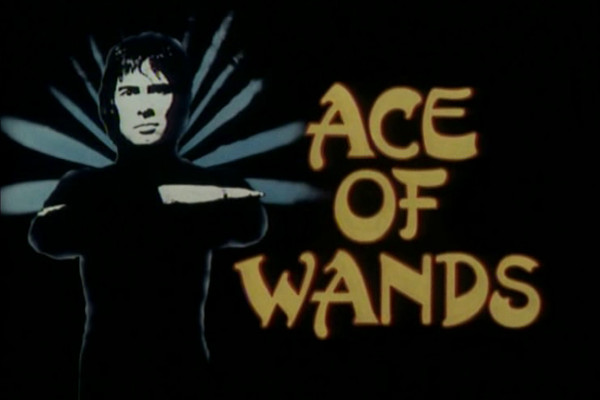
Ace of Wands ran from July 1970 to November 1972. Featuring a stage magician known as "Tarot", and his two friends, brother and sister duo Chas and Mikki, they investigate mysteries and solve crimes against a flamboyant and imaginative crop of villains. And, it can't go without being mentioned, a very catchy theme tune. Being aired so long ago that we weren't old enough to have seen it even here at The Anorak Zone, I caught it for the first time this year. Join me as I look back at the existing final season, and rank its six stories from worst to best...
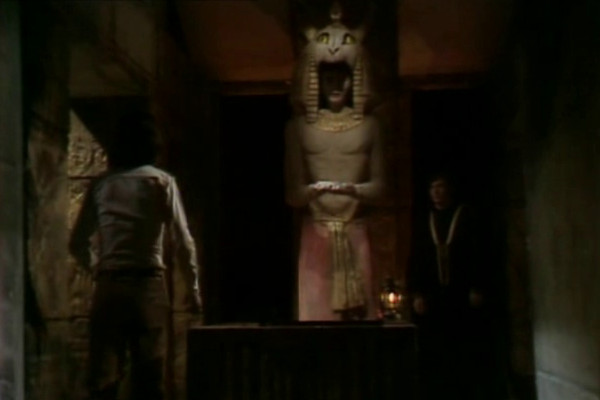
Ace of Wands is, fundamentally, a show for kids, even though it often doesn't feel like it. Here though there's very little doubt, with Victor Pemberton turning in a linear, matinee serial plot with all the tired tropes of Egyptian mummies to go with it. We meet an ex-partner of Tarot's, out for revenge, which does make the star of the show look somewhat staid in comparison. Basing a television series around a man who rarely relied on violence and showed compassion to his enemies was a novel and rewarding thing... but occasionally, as here, it could make him come over like a geography supply teacher.
Heavily padded, there's an extended sequence with a camel and a palm tree stuck in a quarry that doubles for Egypt. Yet perhaps the most shocking thing in this most kid-friendly of stories is Chas calling Tarot a "berk"... although it was common slang at the time, the origin of the word is far ruder, actually Cockney rhyming slang for the c-word. Chas was often bright and inventive, even stylish. Sadly in Pemberton's scripts they played up the buffoonish nature of his character, and he was forced to act more like Robin Askwith in the Confessions series, only the tangible chemistry of the three leads keeping it bearable.
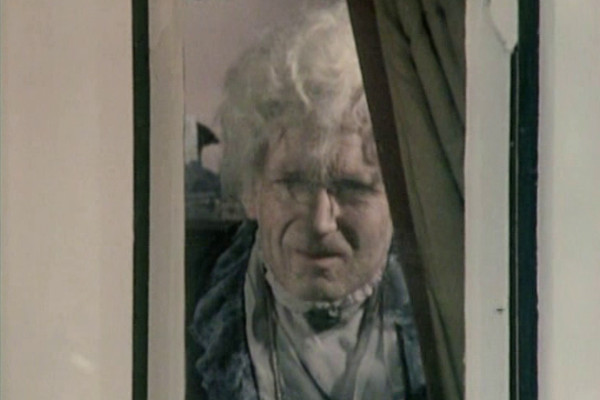
Pemberton's other script for the season, while more entertaining, does illustrate that he perhaps didn't appreciate the spirit of macabre imagination as much as his two peers. If you're reading this without having seen the programme, then be warned that there's a spoiler to follow in the next sentence. For the entire twist in the plot of this one is that an elderly lady's 100-year-old sister is actually a man in disguise. Sadly, it's something that was obvious, to this pair of eyes at least, within the first second of seeing "her", so the entire foundation of the narrative is shaky. Add to this more of Pemberton's old-hat tropes – this time a group with a days of the Raj fixation – and it's one you can skip.
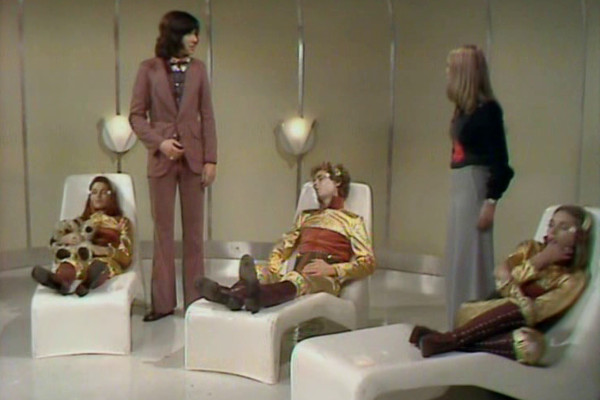
PJ Hammond's slightly underwhelming conclusion to the entire series, the "were the leads blown up at the end?" cliffhanger never resolved as Thames cancelled the show to make The Tomorrow People instead. Three episodes seems an optimum length for Ace of Wands stories, with the four-parters (this and The Power of Atep) seeming to drag over the runtime. There's padding in this, and, for the only story of the six to not feature a boom mike in shot, it still looks horribly cheap.
Make no mistake, Ace of Wands is a programme for people who like series such as 70s Doctor Who or Blake's 7... a target audience that can appreciate the joys of ropey blue screen or filmed exteriors/video interiors pretending to be the same location. It's a very cheap, brightly lit show, where the cast often seem to be about to forget their lines due to rushed takes, and the latest "special" effect is anything but.
The Anorak Zone loves Sapphire & Steel and is a big admirer of PJ Hammond's work, so can only conclude that the set-up – effete hippies make household appliances that attack – looked far better in his imagination than in realisation. Talking of that series, then this one begins in the fictitious village of Dewerton... the same name of the railway station in Sapphire & Steel's second assignment.

In many of these Ace of Wands stories the only truly supernatural element is Tarot's psychic connection with his assistant Mikki. As a result many of them operate in reverse of how you'd expect: rather than entering a normal situation and finding something wild and outrageous behind it, they begin with apparently fantastical events and then rationalise them as it goes on. This three-parter by Maggie Allen seems to suggest to the viewer that people have been turned into living dolls, and that the titular villain (a great performance by Pat Nye) is a doll come to life. It turns out to be none of these things, just a lonely woman who appears to have had a nervous breakdown and is left in peace by Tarot so as not to cause her any more emotional turmoil... dark stuff for kid's TV.
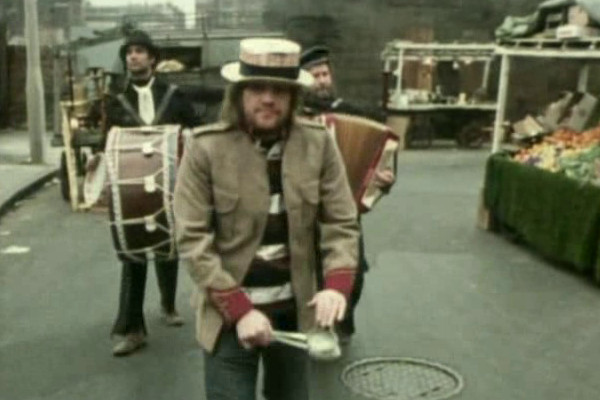
The first two seasons of Ace of Wands (comprising eight stories spread over 26 episodes, with characters known as Lulli and Sam helping Tarot) are widely held to be superior to the third run, but were wiped from the ITV archives. Although poor quality audios of some episodes still exist, it's hard to gauge the real quality of them. But, while I concede that the Pemberton episodes are a weak element, it does beg the question... if season three of Ace of Wands is the least successful season, then how great must the other two have been?
This opening three-parter by PJ Hammond introduces the two new characters, Chas and Mikki, and has Tarot defending a market place from what appears to be a curse. It's peopled by some of his splendidly bizarre characters, such as the thuggish spoon player, or the businessman with a snake in a bird cage. Like Mama Doc, the end reality is far more plausible than opening impressions, but this has many wonderful moments. Almost certainly the most bizarre element is that it was filmed in a busy location, and so many of the shots feature the elderly and young school children looking into the cameras while the action is going on. These moments are not only left in the final show, but even included as frequent close ups, for a pleasingly off-kilter editorial choice.
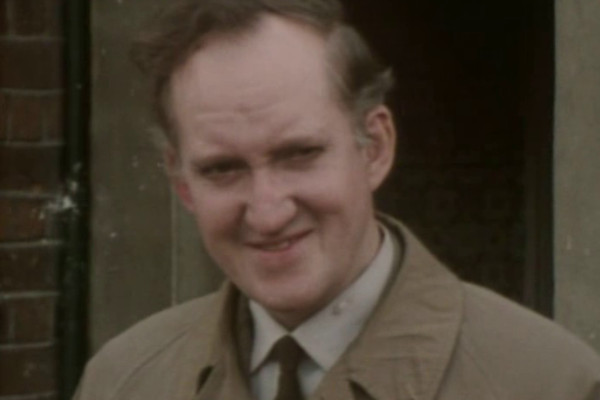
Brian Wilde guest stars as Mr. Peacock, a man with the power to project images into the minds of others. Wilde is terrifically menacing in the part, and for once Tarot is powerless against him, only able to use his psychological loneliness to overcome the threat. Like the rest of the programme, it can look cheap and tatty at times, and you have to use your imagination to "buy in" to the situations. The direction and incidental music for this one compliment it perfectly, though even the best of these episodes require viewers to turn a blind eye to the stagier acting of two of the three leads, only Roy Holder as Chas really getting a pass.
It's perhaps stretching it to say that this PJ Hammond script is so good it's like watching a lost episode of Sapphire & Steel, but at times it does come close. Mr. Peacock is almost a proto-Shape, a dispossessed, elderly man out to terrorise people for his own entertainment... in a tea-time family show. What cannot also be understated is how many nice roles Hammond writes for women: in particular, Mikki is neither a damsel in distress, or a violently empowered "ball buster"... she's there as an equal to Tarot, with a respectful and sometimes flirtatious relationship.